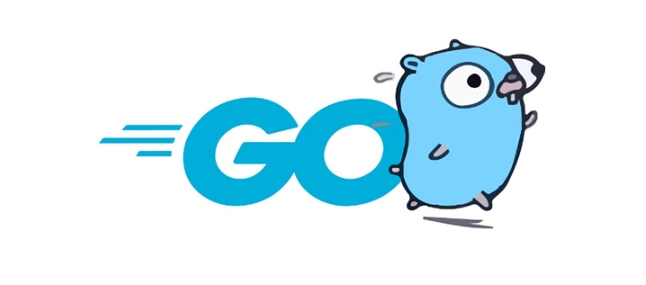 Backend Development
Backend Development
 Golang
Golang
 What are the best practices for logging in Go (slog vs zap vs logrus)?
What are the best practices for logging in Go (slog vs zap vs logrus)?
What are the best practices for logging in Go (slog vs zap vs logrus)?
Jul 29, 2025 am 04:24 AMThe Go log library should be selected according to the project requirements, as follows: 1. The standard library slog is preferred for new projects or lightweight requirements, because it has built-in structured log support and no additional dependencies; 2. Recommended zap for high-performance and high-concurrency scenarios, with type safety and excellent throughput capabilities; 3. Select logrus when old projects or need rich plug-ins to support, which has strong compatibility but weak performance. If structured logs are required, slog or zap is preferred. If there is performance pressure, choose zap. If there is already logrus dependencies, you can continue to be used or migrated gradually. Overall, you can select the most suitable log library based on team familiarity and project reality.

Go's log library selection is actually quite critical, especially the three common options: slog, zap and logrus. If you are just starting out or want to optimize your logging system, the following suggestions may help you.

Standard library slog: simple and direct, suitable for new projects
Go 1.21 introduces the standard library slog , which provides an interface for structured logs without the need to introduce additional third-party packages. For most small and medium-sized projects, slog is enough, especially when you don't want to introduce too many dependencies.
- advantage :
- Built in the standard library, no installation required
- API is simple and clear, quick to get started
- Support structured log output (JSON or text)
- shortcoming :
- The functions are relatively basic, such as not adding call stack information automatically
- Not as extensible as zap or logrus
If you are writing an internal service or gadget, using slog is a lightweight and safe choice. It's easy to configure, just set the handler:

logger := slog.New(slog.NewJSONHandler(os.Stdout, nil)) slog.SetDefault(logger)
Uber's zap: Performance-first, suitable for high concurrency scenarios
zap is an open source log library for Uber, focusing on high performance and type safety. If your application is sensitive to performance, such as high-frequency trading systems, API gateways, etc., zap is a good choice.
- advantage :
- Excellent performance, especially suitable for services with large throughput
- Two modes are available: high-performance
zap.Loggerand more flexiblezap.SugaredLogger - Supports rich log levels, field types and log rotations
- shortcoming :
- The configuration is a little more complicated
- The call stack is not recorded by default and needs to be enabled manually.
When using zap, it is recommended to use NewProductionConfig() or custom configuration to unify the format from the beginning:

cfg := zap.NewProductionConfig() cfg.Level = zap.NewAtomicLevelAt(zap.InfoLevel) logger, _ := cfg.Build()
In addition, zap provides integration capabilities with systems such as opentelemetry, which is very helpful in building observability systems.
logrus: rich in features, suitable for old projects or plug-in development
logrus is an old-fashioned log library that supports hooks and output in multiple formats (including JSON and text), and is also compatible with the log interface of the standard library. If you are maintaining an old project or want to quickly access the logging function, logrus is more suitable.
- advantage :
- The plug-in ecosystem is mature and supports various hooks (such as sending to Slack and writing to the database)
- The usage method is close to the standard library and the learning cost is low
- Support field addition and log level control
- shortcoming :
- Performance is not as good as zap, especially in high concurrency
- The default output is not structured enough, which can easily lead to difficulty in parsing logs.
The typical usage of logrus is this:
log := logrus.New()
log.SetLevel(logrus.DebugLevel)
log.WithFields(logrus.Fields{
"animal": "walrus",
}).Info("A walrus appears")If you are already using logrus but want to upgrade performance, you can consider migrating to zap or combining both (such as zap to replace the underlying implementation).
How to choose a model? Look at these dimensions
You can compare these three libraries from the following aspects:
- Are structured logs required ?
- Yes → slog / zap
- No → logrus
- Is there performance pressure ?
- Yes → zap
- No → slog or logrus
- Is there any historical code that depends on logrus ?
- Yes → Continue to use logrus or gradually migrate
- No → It is recommended to use slog or zap
Another compromise is to abstract a layer of your own logger interface, so that switching is more convenient in the future.
Basically that's it. Which library to choose is actually not that absolute. The key is to look at your team's familiarity and the specific needs of the project. If it is a new project, slog is enough; if it pursues performance, zap is stronger; if it requires flexibility and historical compatibility, logrus is not bad either.
The above is the detailed content of What are the best practices for logging in Go (slog vs zap vs logrus)?. For more information, please follow other related articles on the PHP Chinese website!

Hot AI Tools

Undress AI Tool
Undress images for free

Undresser.AI Undress
AI-powered app for creating realistic nude photos

AI Clothes Remover
Online AI tool for removing clothes from photos.

Clothoff.io
AI clothes remover

Video Face Swap
Swap faces in any video effortlessly with our completely free AI face swap tool!

Hot Article

Hot Tools

Notepad++7.3.1
Easy-to-use and free code editor

SublimeText3 Chinese version
Chinese version, very easy to use

Zend Studio 13.0.1
Powerful PHP integrated development environment

Dreamweaver CS6
Visual web development tools

SublimeText3 Mac version
God-level code editing software (SublimeText3)

Hot Topics
 Is golang frontend or backend
Jul 08, 2025 am 01:44 AM
Is golang frontend or backend
Jul 08, 2025 am 01:44 AM
Golang is mainly used for back-end development, but it can also play an indirect role in the front-end field. Its design goals focus on high-performance, concurrent processing and system-level programming, and are suitable for building back-end applications such as API servers, microservices, distributed systems, database operations and CLI tools. Although Golang is not the mainstream language for web front-end, it can be compiled into JavaScript through GopherJS, run on WebAssembly through TinyGo, or generate HTML pages with a template engine to participate in front-end development. However, modern front-end development still needs to rely on JavaScript/TypeScript and its ecosystem. Therefore, Golang is more suitable for the technology stack selection with high-performance backend as the core.
 How to build a GraphQL API in golang
Jul 08, 2025 am 01:03 AM
How to build a GraphQL API in golang
Jul 08, 2025 am 01:03 AM
To build a GraphQLAPI in Go, it is recommended to use the gqlgen library to improve development efficiency. 1. First select the appropriate library, such as gqlgen, which supports automatic code generation based on schema; 2. Then define GraphQLschema, describe the API structure and query portal, such as defining Post types and query methods; 3. Then initialize the project and generate basic code to implement business logic in resolver; 4. Finally, connect GraphQLhandler to HTTPserver and test the API through the built-in Playground. Notes include field naming specifications, error handling, performance optimization and security settings to ensure project maintenance
 How to install Go
Jul 09, 2025 am 02:37 AM
How to install Go
Jul 09, 2025 am 02:37 AM
The key to installing Go is to select the correct version, configure environment variables, and verify the installation. 1. Go to the official website to download the installation package of the corresponding system. Windows uses .msi files, macOS uses .pkg files, Linux uses .tar.gz files and unzip them to /usr/local directory; 2. Configure environment variables, edit ~/.bashrc or ~/.zshrc in Linux/macOS to add PATH and GOPATH, and Windows set PATH to Go in the system properties; 3. Use the government command to verify the installation, and run the test program hello.go to confirm that the compilation and execution are normal. PATH settings and loops throughout the process
 Go sync.WaitGroup example
Jul 09, 2025 am 01:48 AM
Go sync.WaitGroup example
Jul 09, 2025 am 01:48 AM
sync.WaitGroup is used to wait for a group of goroutines to complete the task. Its core is to work together through three methods: Add, Done, and Wait. 1.Add(n) Set the number of goroutines to wait; 2.Done() is called at the end of each goroutine, and the count is reduced by one; 3.Wait() blocks the main coroutine until all tasks are completed. When using it, please note: Add should be called outside the goroutine, avoid duplicate Wait, and be sure to ensure that Don is called. It is recommended to use it with defer. It is common in concurrent crawling of web pages, batch data processing and other scenarios, and can effectively control the concurrency process.
 Go embed package tutorial
Jul 09, 2025 am 02:46 AM
Go embed package tutorial
Jul 09, 2025 am 02:46 AM
Using Go's embed package can easily embed static resources into binary, suitable for web services to package HTML, CSS, pictures and other files. 1. Declare the embedded resource to add //go:embed comment before the variable, such as embedding a single file hello.txt; 2. It can be embedded in the entire directory such as static/*, and realize multi-file packaging through embed.FS; 3. It is recommended to switch the disk loading mode through buildtag or environment variables to improve efficiency; 4. Pay attention to path accuracy, file size limitations and read-only characteristics of embedded resources. Rational use of embed can simplify deployment and optimize project structure.
 Go for Audio/Video Processing
Jul 20, 2025 am 04:14 AM
Go for Audio/Video Processing
Jul 20, 2025 am 04:14 AM
The core of audio and video processing lies in understanding the basic process and optimization methods. 1. The basic process includes acquisition, encoding, transmission, decoding and playback, and each link has technical difficulties; 2. Common problems such as audio and video aberration, lag delay, sound noise, blurred picture, etc. can be solved through synchronous adjustment, coding optimization, noise reduction module, parameter adjustment, etc.; 3. It is recommended to use FFmpeg, OpenCV, WebRTC, GStreamer and other tools to achieve functions; 4. In terms of performance management, we should pay attention to hardware acceleration, reasonable setting of resolution frame rates, control concurrency and memory leakage problems. Mastering these key points will help improve development efficiency and user experience.
 How to build a web server in Go
Jul 15, 2025 am 03:05 AM
How to build a web server in Go
Jul 15, 2025 am 03:05 AM
It is not difficult to build a web server written in Go. The core lies in using the net/http package to implement basic services. 1. Use net/http to start the simplest server: register processing functions and listen to ports through a few lines of code; 2. Routing management: Use ServeMux to organize multiple interface paths for easy structured management; 3. Common practices: group routing by functional modules, and use third-party libraries to support complex matching; 4. Static file service: provide HTML, CSS and JS files through http.FileServer; 5. Performance and security: enable HTTPS, limit the size of the request body, and set timeout to improve security and performance. After mastering these key points, it will be easier to expand functionality.
 Go select with default case
Jul 14, 2025 am 02:54 AM
Go select with default case
Jul 14, 2025 am 02:54 AM
The purpose of select plus default is to allow select to perform default behavior when no other branches are ready to avoid program blocking. 1. When receiving data from the channel without blocking, if the channel is empty, it will directly enter the default branch; 2. In combination with time. After or ticker, try to send data regularly. If the channel is full, it will not block and skip; 3. Prevent deadlocks, avoid program stuck when uncertain whether the channel is closed; when using it, please note that the default branch will be executed immediately and cannot be abused, and default and case are mutually exclusive and will not be executed at the same time.





